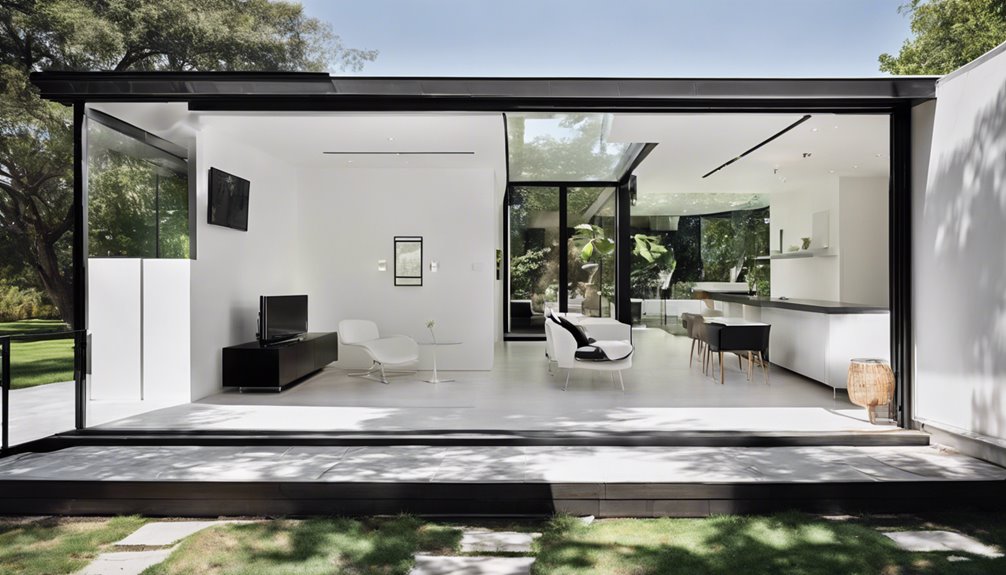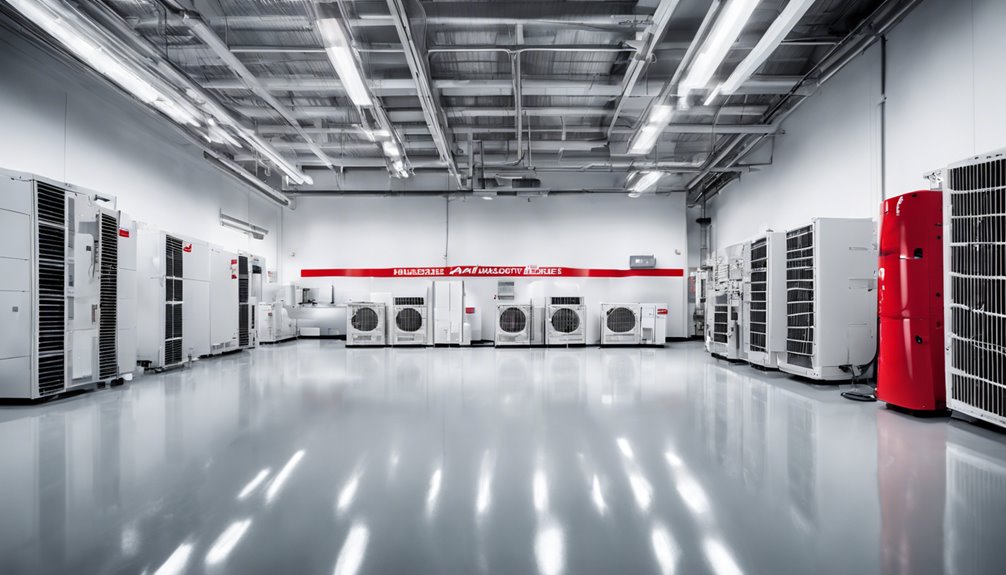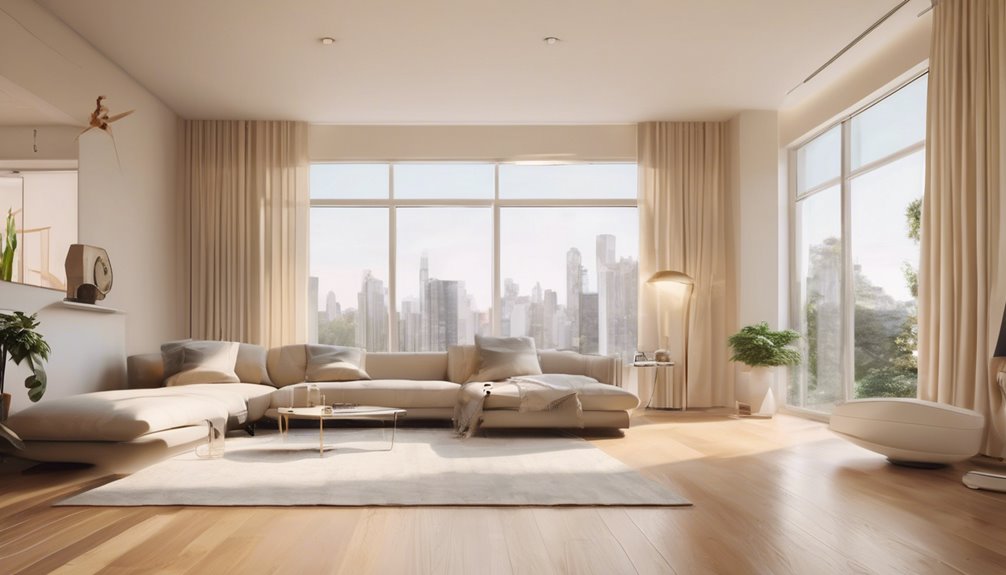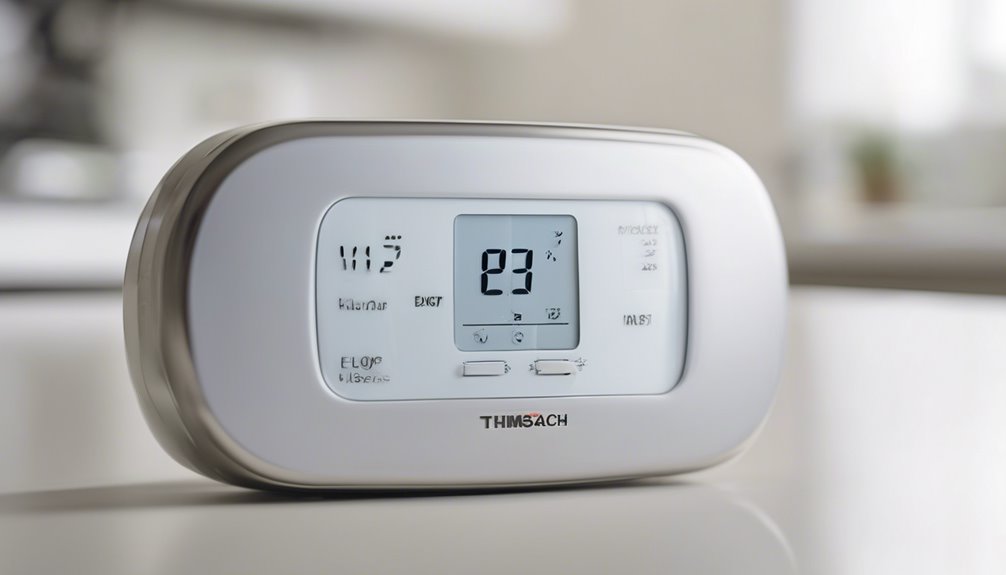Your ductless AC installation cost can vary significantly due to factors like system size and capacity, number of indoor units, outdoor unit location and installation, refrigerant line set length and complexity, electrical requirements and upgrades, installation company and labor costs, home insulation and construction type, and additional features and accessories. It's not just about the brand or model you choose, but how all these elements come together to impact the overall cost. As you explore these factors further, you'll get a better sense of what drives the cost of your ductless AC installation.
Key Takeaways
- System size and capacity significantly impact installation costs, with undersized or oversized systems leading to inefficiencies and increased expenses.
- The number of indoor units needed, depending on home size and desired comfort level, affects the overall cost, with each additional unit increasing the price.
- Installation complexity, including outdoor unit placement, refrigerant line set length, and pipe insulation, drives up costs due to labor and material requirements.
- Home infrastructure, including electrical system upgrades and insulation requirements, can add significant expenses to the overall installation cost.
- Brand options and features, such as premium inverter technology and advanced filtration systems, influence costs, with high-end brands and luxury features resulting in higher prices.
System Size and Capacity
When it comes to ductless AC installation, system size and capacity are crucial factors to consider.
You'll want to ensure the system is properly sized for your space to achieve optimal performance and energy efficiency. A system that's too small won't cool your home effectively, while one that's too large will waste energy and increase your bills.
To get it right, you'll need a professional to perform a load calculation, which takes into account factors like insulation, window size, and local climate.
This calculation will determine the correct system sizing for your specific needs. By investing time in this process, you'll avoid costly mistakes and enjoy a comfortable, energy-efficient home.
Number of Indoor Units
When you're planning your ductless AC installation, you'll need to decide how many indoor units you'll need to cool or heat your space efficiently.
This decision will impact your overall cost, as a single-zone configuration will be priced differently than a multi-zone installation. You'll also need to factor in the additional expenses of each unit, which can add up quickly.
Single-Zone Configuration Costs
A single-zone configuration is the most common ductless AC setup, and it's likely the one you're considering.
This setup involves one outdoor unit connected to one indoor unit, providing cooling or heating to a single zone or room.
The cost of a single-zone configuration can vary depending on the size of the zone, the type of indoor unit, and the complexity of the installation.
Zone mapping, which involves identifying the area that needs cooling or heating, is a crucial step in determining the required capacity of the system.
You'll have configuration options to choose from, such as wall-mounted, floor-standing, or ceiling-recessed indoor units, each with its own pricing.
Multi-Zone Installation Pricing
As you consider upgrading to a multi-zone ductless AC system, you're likely wondering how the number of indoor units affects the overall cost.
The answer lies in zone mapping and installation planning. Each indoor unit serves a specific zone, and the more zones you have, the more complex the installation becomes.
This complexity increases the cost. Installation planning involves designing a customized system to meet your specific needs, which also adds to the expense.
The number of indoor units needed depends on factors like the size of your home, the number of rooms, and the desired level of comfort.
A professional installer will assess your space and develop a plan that suits your needs, but be prepared for higher costs with each additional indoor unit.
Additional Unit Expenses
You'll pay more for each additional indoor unit you add to your ductless AC system, and the cost increases aren't insignificant. The more units you need, the higher your total cost will be. This is because each unit requires its own installation, wiring, and refrigerant lines.
| Number of Units | Additional Cost per Unit | Total Cost |
|---|---|---|
| 2 | $500-$1,000 | $2,000-$4,000 |
| 3 | $1,000-$2,000 | $3,000-$6,000 |
| 4 | $1,500-$3,000 | $4,500-$8,000 |
| 5 | $2,000-$4,000 | $6,000-$10,000 |
Keep in mind that these are rough estimates and can vary depending on unit upgrades, additional costs, and other factors.
Outdoor Unit Location and Installation
One crucial aspect of ductless AC installation is strategically placing the outdoor unit to ensure optimal performance and efficiency.
You'll want to choose a location that provides sufficient ground clearance to allow for airflow and easy maintenance. Typically, this means installing the unit at least three feet off the ground and away from any obstructions, such as shrubs, trees, or fences.
Obstruction avoidance is key, as blocked airflow can decrease the unit's performance and increase energy bills. Additionally, consider the noise level and proximity to windows, doors, or neighboring properties to minimize disturbance.
Refrigerant Line Set Length and Complexity
When you're installing a ductless AC, the length of the refrigerant line set is a significant factor in the overall cost.
You'll pay more for a longer line set, and the number of bends in the line can also increase the price.
As the complexity of the installation grows, so does the bill, so it's essential to consider these factors when planning your project.
Line Length Impacts Cost
How far do the refrigerant lines need to stretch to reach every corner of your home?
The length of these lines significantly impacts the cost of your ductless AC installation. Line length variations can greatly affect the overall price.
If the lines need to stretch further to reach distant areas, the cost increases. Installation obstacles, such as navigating around corners, through walls, or across ceilings, also add to the expense.
Longer lines require more material, and complex installations demand more labor and expertise, driving up the cost. Be prepared for higher costs if your home requires extensive line runs or overcoming challenging installation obstacles.
Number of Bends Matters
Your ductless AC installation costs also depend on the number of bends in the refrigerant line set, which affects its overall length and complexity. The more bends, the longer the line set, and the more material you'll need, increasing costs. For instance, a 90-degree bend requires more material than a 45-degree bend. Additionally, bends can reduce airflow, requiring more powerful systems or additional components like flex ducts, which add to the overall cost.
| Number of Bends | Line Set Length | Complexity |
|---|---|---|
| 2-3 | 15-20 ft | Low |
| 4-5 | 25-35 ft | Medium |
| 6-7 | 40-50 ft | High |
| 8 or more | 55+ ft | Very High |
Pipe insulation may also be required for longer line sets, adding to the cost. The complexity of the line set installation can significantly impact your overall ductless AC installation costs.
Complexity Adds Up Fast
What drives up costs in ductless AC installation isn't just the number of bends, but also the cumulative effect of complexity.
You'll find that design factors like the refrigerant line set's length, insulation, and material type all contribute to the overall cost. Installation variables, such as the need for specialized tools or additional labor, also add to the expense.
For instance, a longer line set requires more material, which increases the cost. Additionally, if the installation requires navigating obstacles like tight spaces or multiple floors, the complexity – and cost – will escalate.
As you can see, it's not just about the number of bends; it's about how all these factors interact to drive up the final bill.
Electrical Requirements and Upgrades
The electrical system in your home plays a critical role in supporting your new ductless AC installation, and it's essential to ensure it can handle the increased power demand.
Your electrical panel might need an upgrade to accommodate the new system, which can add to the overall cost. If your panel is outdated or can't handle the increased load, you may need service upgrades to bring it up to code.
This could involve replacing your electrical panel or adding a new circuit to support the ductless AC. The cost of these upgrades will depend on the complexity of the work required and the materials needed.
Be prepared for additional expenses if your electrical system isn't compatible with your new ductless AC.
Ductless AC Brand and Quality
When choosing a ductless AC system, you'll want to consider the brand and quality that fit your budget and needs.
High-end brands like Mitsubishi and Daikin offer premium features and performance, but you can also find entry-level price points from brands like Cooper & Hunter and Senville.
High-End Brand Options
You're looking for the crème de la crème of ductless AC brands, and rightly so.
High-end brand options offer premium offerings that justify their higher prices. These luxury features include advanced inverter technology, higher SEER ratings, and sleek designs that blend seamlessly into your home's décor.
You'll also find advanced filtration systems, whisper-quiet operation, and smart sensors that optimize energy efficiency. Brands like Mitsubishi Electric, Fujitsu, and Daikin offer high-end models that provide unparalleled comfort and performance.
With these top-tier brands, you can expect exceptional quality, durability, and reliability. While the upfront cost may be higher, these luxury features will pay off in the long run with reduced energy bills and extended system lifespan.
Entry-Level Price Points
Not everyone needs or wants the premium features of high-end ductless AC brands.
If you're on a tighter budget, you'll find entry-level price points from brands like Cooper & Hunter, Della, or Senville. These budget options offer a more affordable initial investment, often between $2,000 to $4,000 for a single-zone system.
While they mightn't have all the bells and whistles, they still provide reliable cooling and heating. Keep in mind that you might've to compromise on features like energy efficiency, noise level, or smart technology integration.
However, if you're looking for a no-frills ductless AC solution, these entry-level brands can be a cost-effective choice.
Installation Company and Labor Costs
The installation company and labor costs are a significant component of the overall ductless AC installation expense.
When you're shopping around for a ductless AC system, you might notice that installation costs vary greatly from one company to another.
This is because each company has its own set of labor costs, which are influenced by factors such as:
- Business experience: More experienced companies may charge higher labor rates due to their expertise and reputation.
- Company reputation: Well-established companies with a strong reputation may charge more for their services.
- Technician training and certification: Companies with highly trained and certified technicians may charge more for their labor.
- Overhead and insurance costs: Companies with higher overhead and insurance costs may pass these expenses on to you in the form of higher labor rates.
Home Insulation and Construction Type
Home insulation and construction type play a significant role in determining the complexity and cost of your ductless AC installation.
The type of wall construction and insulation in your home can significantly impact the installation process. For instance, if you have an older home with inadequate insulation, your installer may need to add extra materials to ensure the system operates efficiently.
This can increase the overall cost. Similarly, if you have a home with unique wall construction, such as a historic home with plaster walls, the installation process may be more complex and time-consuming, resulting in higher costs.
Your installer will assess your home's specific needs and factor these considerations into the final cost.
Additional Features and Accessories
Your ductless AC system can be customized with additional features and accessories to enhance its performance, efficiency, and convenience.
You can choose to add features that make your life easier, like smart thermostats that can be controlled remotely or advanced filtration systems that purify the air.
These add-ons can increase the overall cost of installation, but they're worth considering if you want a premium AC experience.
- Smart thermostats with Wi-Fi connectivity for remote temperature control
- Advanced filtration systems that capture 99.97% of particles as small as 0.3 microns
- Zone control systems that allow you to cool individual areas of your home
- Energy monitoring systems that track your energy usage and provide insights for optimization
Local Permits, Inspections, and Code Compliance
As you prepare for ductless AC installation, don't overlook the crucial step of obtaining necessary permits and passing inspections. Local regulations vary, and compliance is key to avoiding costly rework or even system shutdown. You'll need to secure permits from your local government, which may involve municipal fees. These fees can range from a few hundred to several thousand dollars, depending on your location and the complexity of the installation.
| Factor | Impact on Cost |
|---|---|
| Municipal fees | $500-$2,000 |
| Inspection requirements | $500-$1,000 |
| Compliance with local building codes | $1,000-$5,000 |
Keep in mind that these costs can add up quickly, so it's essential to factor them into your overall budget. Be sure to discuss permits, inspections, and code compliance with your installer to ensure a smooth and cost-effective installation process.
Frequently Asked Questions
Can I Install a Ductless AC Myself to Save Money?
You're considering DIY ductless AC installation to save money, but be aware that you'll face DIY challenges and installation risks, like improper sizing, wiring issues, and refrigerant leaks, which can lead to safety hazards and costly rework.
Will a Ductless AC System Increase My Home's Value?
You'll be happy to know that a ductless AC system can increase your home's value by boosting its property appeal, making it more attractive to potential buyers and potentially driving up its resale price.
How Long Does a Typical Ductless AC Installation Take?
You'll be pleased to know that a typical ductless AC installation takes around 1-3 days, depending on your home's size and complexity. Time constraints arise from installation complexity, such as multi-zone systems or tricky ductwork.
Can I Finance My Ductless AC Installation Through a Lender?
You can finance your ductless AC installation through a lender, and you'll find various lender options offering flexible financial plans. You'll need to research and compare rates, terms, and fees to find the best fit for your budget and needs.
Do Ductless AC Systems Require Regular Maintenance?
You'll need to perform regular maintenance on your ductless AC system to ensure optimal performance. You'll be responsible for filter cleaning and scheduling system checks with a professional to prevent breakdowns and extend its lifespan.
Conclusion
You've made it to the end of our breakdown on why ductless AC installation costs vary so much. Now you know that system size, indoor units, outdoor unit location, refrigerant line set length, electrical requirements, installation company, home insulation, and local permits all play a role in the final price tag. With this knowledge, you're better equipped to plan and budget for your ductless AC installation. Get quotes from multiple contractors and don't be afraid to ask questions to ensure you get the best deal for your unique situation.



